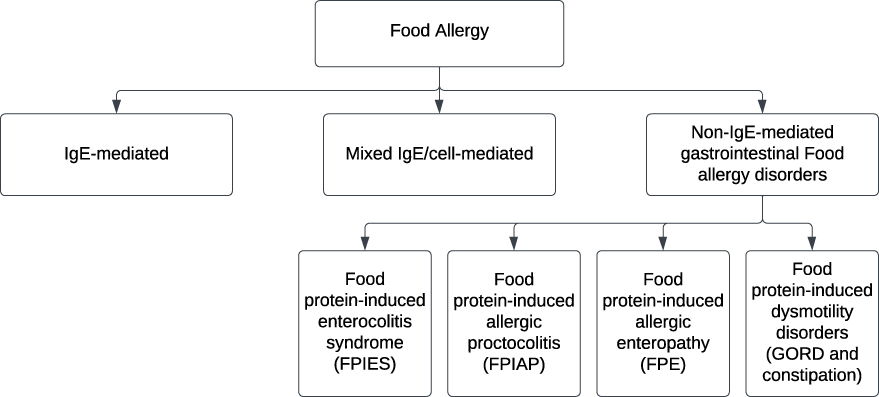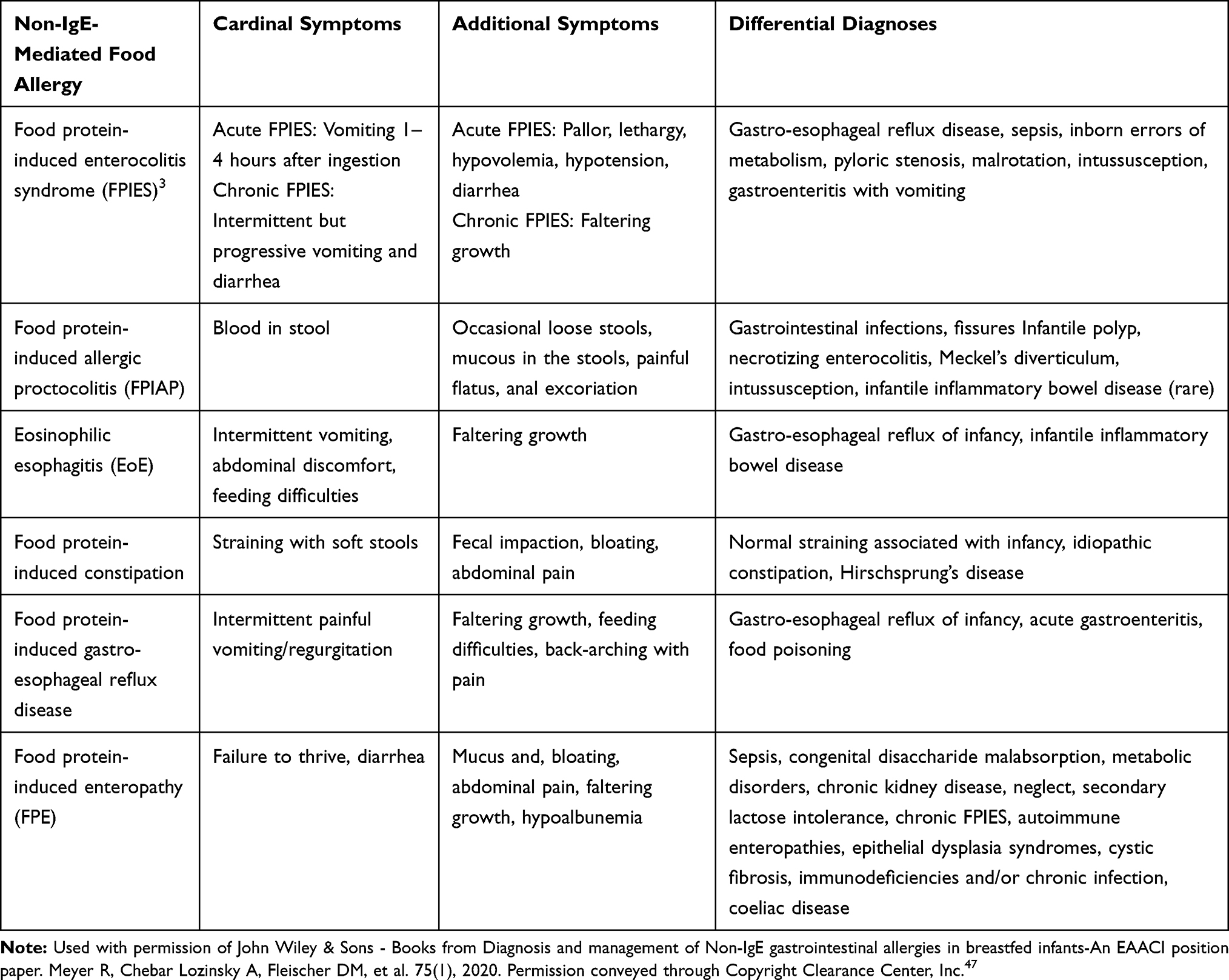Al-Iede M, Sarhan L, Alshrouf MA, Said Y. J Asthma Allergy. 2023 Mar 14;16:279-291. doi: 10.2147/JAA.S284825.
Abstract: Food allergy is an immune-mediated disease that can result in considerable morbidity and even mortality, with a significant negative impact on patients’ quality of life. It is characterized by allergic symptoms that can occur shortly after a relevant food allergen ingestion, or can be delayed or chronic, which make it more difficult for diagnosis.
The symptoms of this disease can range from mild to severe, and rarely can cause anaphylaxis, a life-threatening allergic reaction. The prevalence of non-immunoglobulin E (IgE)-mediated food allergy is poorly established outside of cow’s milk allergy, with an adjusted incidence ranging between 0.13% and 0.72%. Several disorders are classified as non-immunoglobulin E (IgE)-mediated food allergies that predominantly affect the gastrointestinal tract including food protein-induced enterocolitis syndrome (FPIES), food protein-induced allergic proctocolitis (FPIAP), food protein-induced allergic enteropathy (FPE), and food protein-induced dysmotility disorders (GORD and constipation). Eosinophilic esophagitis (EoE) is listed in this group, even though it considered by some authorities to be mixed reaction with both IgE and cell-mediated immune response to be involved in the reaction. The most common types of non-IgE-mediated food allergy are food protein-induced enterocolitis syndrome (FPIES) and food protein-induced allergic proctocolitis (FPIAP). These disorders typically present in infancy and are often triggered by cow’s milk protein. Patients with FPIES present with profuse emesis and dehydration, while FPIAP patients present with hematochezia in otherwise healthy infants. Since there are no specific confirmatory non-invasive diagnostic laboratory tests, the diagnosis is usually made clinically when typical symptoms improve upon the removal of the culprit food. Food reintroduction should be attempted, when possible, with documentation of symptoms of relapse to confirm the diagnosis. The management includes dietary avoidance, supportive treatment in the case of accidental exposure, and nutritional counseling. This review focuses on the clinical manifestations, epidemiology, management, and recent guidelines of the most common non-IgE-mediated food hypersensitivity disorders (FPIES, FPIAP, and FPE).

No comments:
Post a Comment